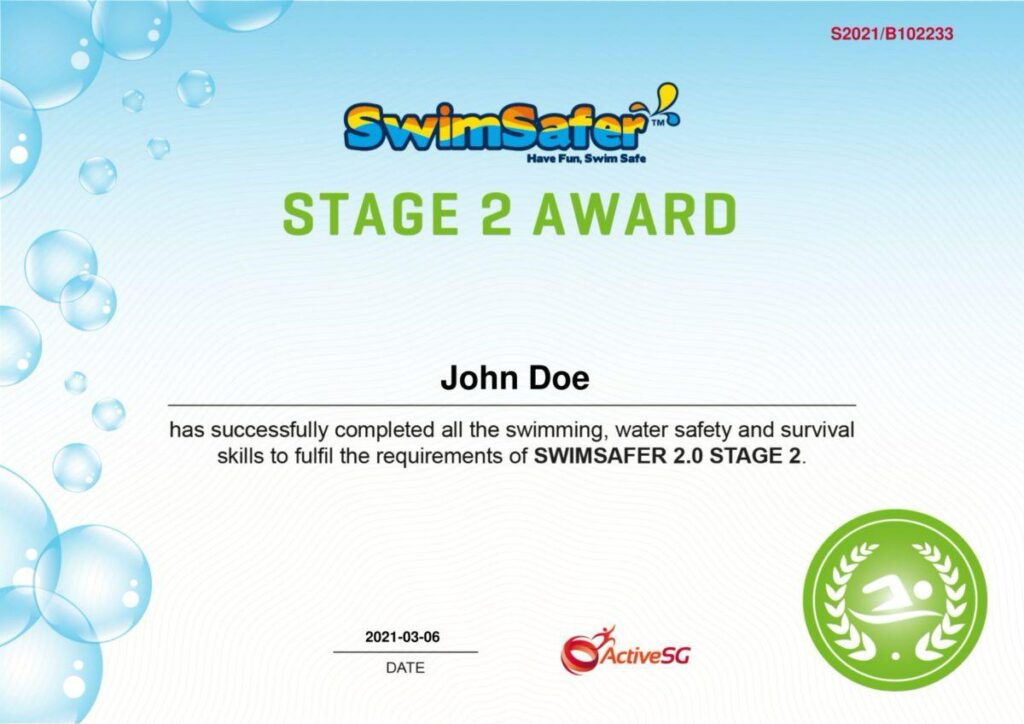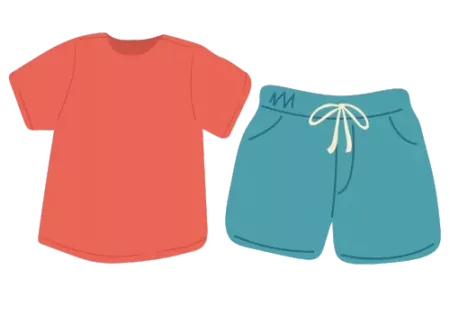Penguin Swim School | best swimming school in Singapore | expert swimming lessons in Singapore

Stage 2
Fundamental Water Skills
Development of general abilities, such as sculling, feet-first surface dives, unassisted step entry into water, personal water safety skills, and water safety in aquatic contexts. The objective is to swim 25 meters straight.

Clothing Requirement
Participants in Stage 2 still dress in shorts, a t-shirt, and swimsuits. The clothing requirement is necessary to advance survival and water safety skills. Participants learn how clothing can limit movement and make it more difficult to stay afloat by swimming 15 meters while wearing garments.
In order to save energy in actual emergency situations, they learn to cope with the extra effort and weariness that comes with dressing. By practicing these clothing-related abilities, students become more adaptive and ready for situations where they might unexpectedly find themselves in the water fully clothed.
Stage 2 Test Criteria
Entries & Exits
Step-in entry.
Sculling & Body Orientation
- Front float (mushroom or jellyfish), 10 sec.
- Swim 5m on front, rollover.
- Back float, 10 sec.
- Swim 5m on back.
- Scull, float or tread for 30 sec (incorporated in Survival & Activity Skills).
Underwater Skills
Search for and recover an object in chest deep (student’s) water.
Movement / Swimming / Strokes
- Movement on front 25m (alternating arms & legs and/or simultaneous arms and legs).
- Movement on back 15m (alternating arms & legs and/or simultaneous arms and legs).
Survival & Activity Skills
Scull, float or tread for 30 sec.
Dressed in swimwear, shorts and t-shirt demonstrate:
- Swim 15m using any survival stroke.
- Swim to pool edge and climb out.
- Put on an appropriately sized PFD and jump into the water (at least 1.4m deep)
- Swim 25m with PFD, then climb out of the water.
Knowledge
- Principles of Personal Safety and Survival.
- Environmental Awareness.
- Health Awareness.
- Emergency Situations and Survival Techniques.
- Rescues.
